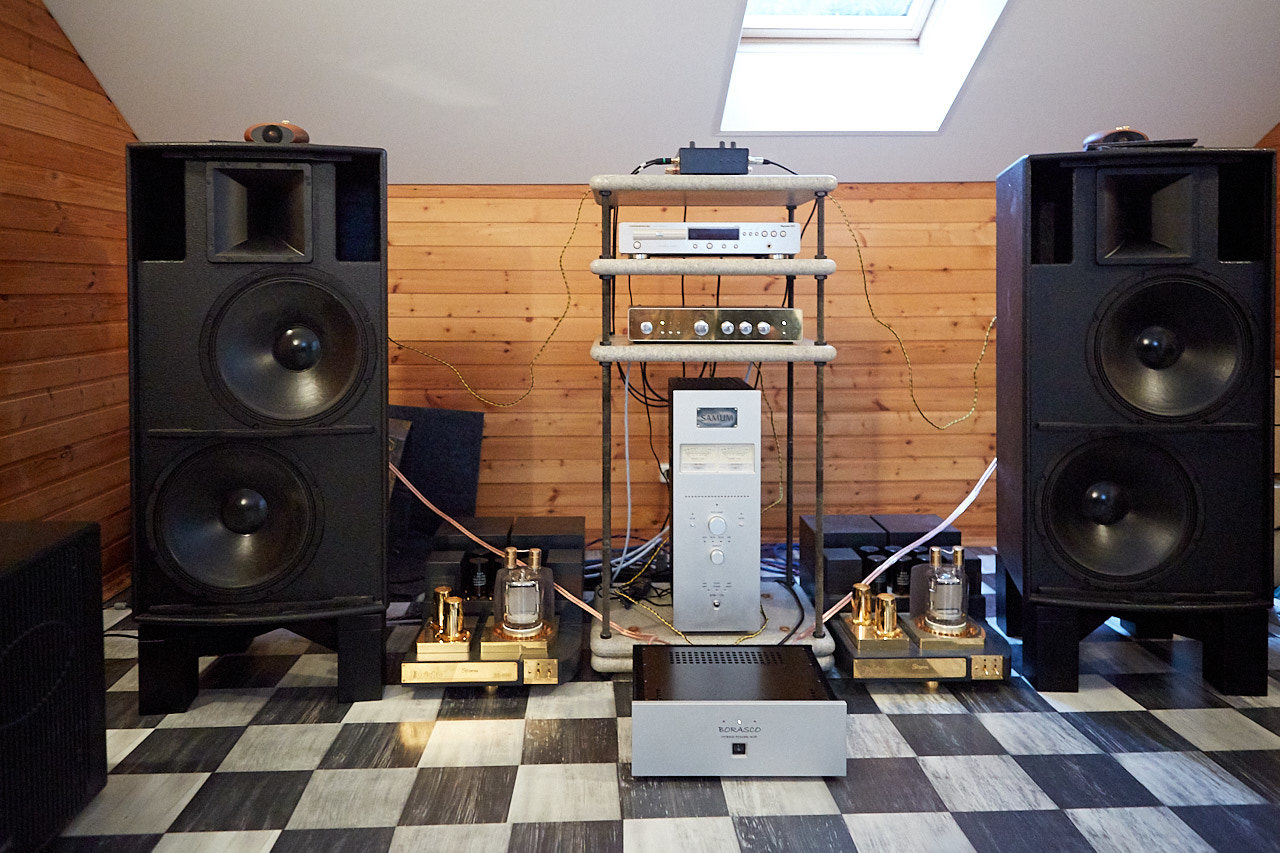In general, I think that PA speakers should not be used for home listening. Mostly because the radiation pattern is so narrow, a critique that I would also direct at using studio monitors. If people find these to sound 'too clinical,' a notion that often arises when dissatisfied users talk about their experience, I think what they actually perceive as problematic is not the neutral frequency response but the rather restricted image in a stereo presentation. It's just so tiny, the stage. Beautiful, but small, like a little diamond. You cannot be engulfed by sound when two 90 degree horizontal dispersion speakers create the stereo illusion for you from a stereo base of 3 meters or so. Those speakers are meant to illuminate a much bigger space, from a much wider base at each side of stage in a big room.
Hi, you can get big stage without loud lateral early reflections just by having the speakers wider apart and the image is as big as is baked into the recording. The big image you seem to like is due to early reflections "enhancing", but there is downside to this and it's just important to be aware of in order to avoid confusion. It's not just speakers and room that makes the sound, but also our auditory system! Not knowing this subjects to confusion.
Difference is, with small enough listening triangle compared to room acoustics and speaker directivity your auditory system is able to split sound into two separate neural streams that are basically direct sound as foreground stream that is now in top of your perception, and room sound as background to this. When this happens, our brain pays involuntary attention to what is on the recording somewhat suppressing the local room sound. When this happens the direct sound, that is on the recording, has all the clarity in the world, while the room sound is now the envelopment. The envelopment could be quite miserable though, unless well positioned setup, suitable acoustics and so on, but the important thing is how your auditory system is on it making a difference.
Neither clarity or envelopment can happen if you enhance the image with strong local room early reflections, if there is no stream separation auditory system doesn't consider it important but just noise basically, no clarity, no envelopment, doesn't pay attention to it and you'd perceive a spacious sound somewhere portion of the room where the speakers locate. This is more relaxing sound and people seem to like it, and consider it as the home hifi sound. But to me for example, the hifi sound is with the stream separation, when my brain gives focus to the sound. But in fact I like both, because some recordings sound better on either likely due to the engineer optimizing for either perception by using microphone and mixing techniques that sounded good with their monitoring situation regarding this. This is something people don't seem to consider very much and neither would I unless I happened to read Griesinger studies.
So, what I'm trying to say is there is third factor besides speakers and room that is very important for perceiving stereo sound and almost nobody is talking about it, which makes a lot of confusing information float around. There is two perceptions to stereo that your brain makes no matter what your speakers and room are, and knowing about this allows one to adjust the system to liking. It doesn't have to be strictly either or, "spacious sound" or "near field direct sound" like traditionally thought: if you find transition distance where your brain locks in or not, you can just choose at will per recording or mood by moving a little, bit closer of further from speakers. Now, if you have wide radiating speakers without toe in and reflective room, it is very likely the transition (stream separation) happens very close to speakers so you'd likely have mostly the hazy sound available in such system, that's only half victory. With directional speakers in domestic room, like PA speakers, and with considering positioning and perhaps tuning room acoustics, it's possible to have the setup so that both listening distances sound nice, with or without stream separation. One could then adjust the listening postion so that the stream separation happens around listening spot, lean forward to get clarity and nice 3D sound, lean back for relaxed hazy frontal sound. This would be good speaker setup, not just good for one stereo sound, but two, which are very different. Some recordings work better on either and some work with both, and you can switch between them at will by changing listening distance a bit.
So, there is no need to argue about this stuff in my opinion, either work. This is just additional information here, if someone is interested about his stuff see basis for it nicely laid out here:
https://www.audiosciencereview.com/...ustics-links-and-excerpts.51487/#post-1853376
